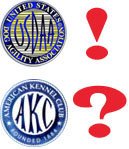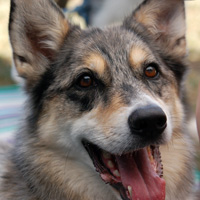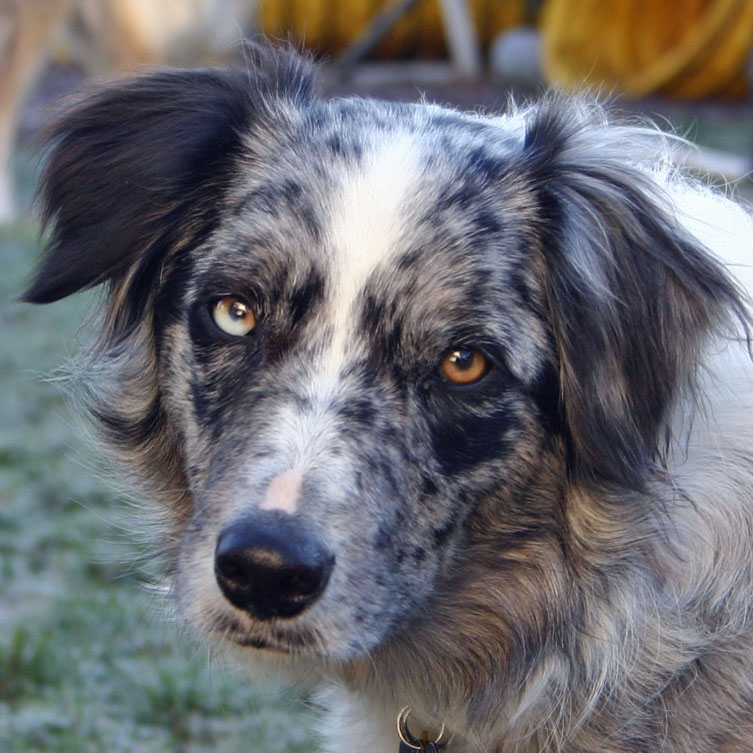SUMMARY: Haiti, civil rights, dog agility equality, me and the Merle Girls.
There has been some discussion among dog bloggers about whether a blog that says it's about dogs (or dog agility, or any other specific topic) is too self-centered if it ignores when the World Out There is undergoing events of great import.
Agility for all?
For example, my agility club has a policy of promoting only agility that allows all healthy adult dogs to compete. So--AKC premiums? Forget it, they're not going out on our email list. Recently, Teacup Agility has come into existence, and we've occasionally seen info on those events come around. But we've called that into question--it allows only dogs under a certain height to compete. So is that exclusionary in the same sense as AKC? Even more recently (effective this year), AKC has allowed its clubs to choose to allow non-AKC dogs to compete in their events. However, they do not compete equally against AKC dogs; they have their own events and their own titles and so on, and aren't eligible for the national competitions. So, is that still exclusionary? (Supreme Court has said "separate but equal" is not in fact equal. Does that apply to dog sports, too?)
This is a highly charged issue, and we're trying to be consistent and nonemotional about it. But does writing about that really make sense when one of the greatest civil rights battles of my adulthood has now started its hearing in the federal courts? Should I be silent when an earthquake has wreaked unimaginable destruction and death on a nearby country (or any country, for that matter).
It's not at all that I don't care about what's going on. I do, in fact, care deeply. But this blog is, after all, "surviving and thriving in dog agility."
But, OK, today. Two unrelated topics. You can skip either, but I ask that you give them a read.
Earthquake
As you all know by know, a 7.0 earthquake devastated the most densely populated parts of Haiti. I've watched and heard the reports come in. My heart has lurched at the sight of the national palace collapsed. (Can you imagine the white house destroyed? Or the capitol building--of your state, let alone your country?) The statistics, guessing up to 100,0000 could be dead. The population of Port au Prince is only a million--that's one out of every 10 people, dead. Ten out of your hundred facebook friends, dead.
They're a poor country and so, we like to think, their infrastructure isn't built as well to withstand earthquakes as is ours in California. And yet, well, who knows.
And not just the average Joe who's been taken down. The president is homeless--national palace destroyed. The archbishop is dead--national cathedral destroyed. The head of the UN in Haiti is missing--whole UN building destroyed. Can you imagine that in your city? Your country? It's almost unimaginable.
I have donated money for the relief effort through the
Clinton Foundation.
If you want to donate there, or anywhere, I suggest that you
check whether the group is on the Institute of Philanthropy's list of top-rated charities. (You can see their worst-rated charities only by becoming a member to get their printed list. So if your charity isn't on the list here, doesn't mean it's not good. Just means do your research on it more carefully.)
And now, on the home front:
Civil rights
I have friends who have lived together for 20 years and love each other deeply. They are wonderful human beings. One is a retired VP of a high-tech company, the other is a skilled accountant. One loves dogs; the other loves photography. Normal people; they've bought a house together, vacation together, plan their retirement together. But, by law, they are not allowed to marry, simply because they are the same sex.
There is no logical reason why they shouldn't be allowed to; it is discrimination, pure and simple. The
California Supreme Court said so. The people of California in a fit of reactionary pique approved (but
very narrowly) Proposition 8, a constitutional amendment that explicitly bans marriage between people of the same sex.
I have other friends who have been together going on 10 years. They love each other very much. One is an avid mountaineer who is often conflicted between love of the challenge and the desire to spend weekends at home, since they both work during the week. Normal people; they've bought a house together, live together, deal with bills and stopped-up sinks and cars that need to go to the repair shop and all that stuff, together. They are married, but only because they rushed in during the narrow window between the Supreme Court decision and the passage of Proposition 8 and hurriedly put together a simple wedding. And the Supreme Court, while it did not throw out Prop 8, also did not invalidate those marriages, which speaks volumes. So they're in an odd position where they are married but none of their friends can hope to share the joy and legal protection of marriage to their loved, long-term partners.
This week, Proposition 8 began its hearing in Federal court. I know that, no matter what happens, it will be appealed by the losing side. It is sad that it is so, as sad as when people fought *for* laws *against* the right of black Americans to vote, to attend the same schools, drink out of the same water fountains, and, yes, marry (gasp) white people. The U.S. Supreme Court stated clearly that even "separate but equal" was not equal.
I've joined a couple of casual groups of "Heterosexuals for Gay Rights." (Don't know enough about them yet to recommend them.) I'm on the mailing list of
Equality California to keep abreast of what's going on. I posted NO ON PROP 8 signs on my lawn, the first time in my life I've ever posted election-related material. I donated to their campaign.
If the opportunity ever comes to you to vote for equal rights for all Americans, I encourage you to do so. It's likely to be one of the few major civil rights issues during our lifetimes that we'll be able to proudly say that we fought for.
Labels: agility in the US, AKC, grab bag
Complete list of labels







